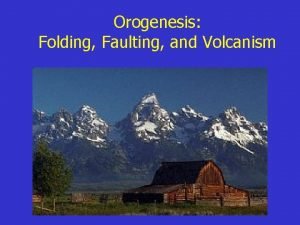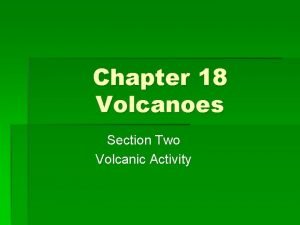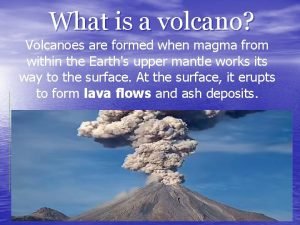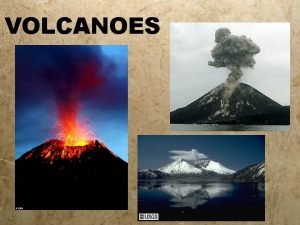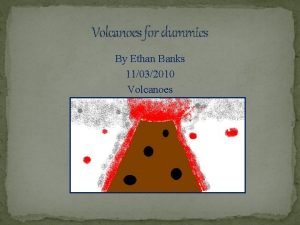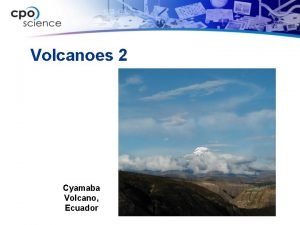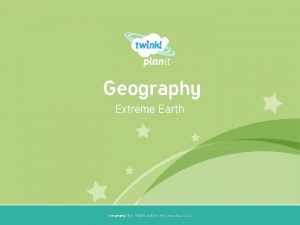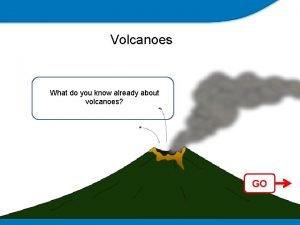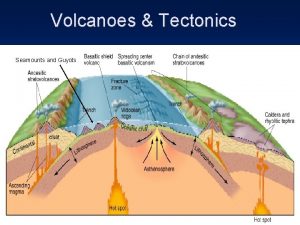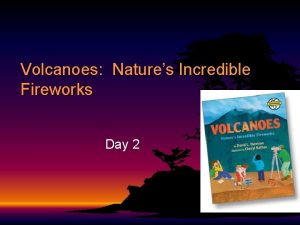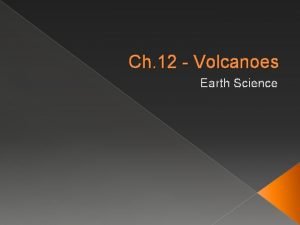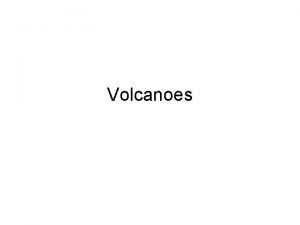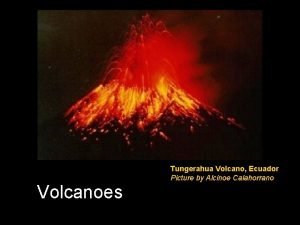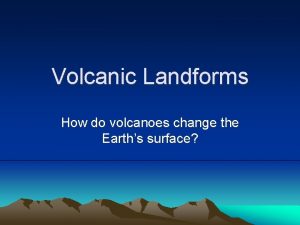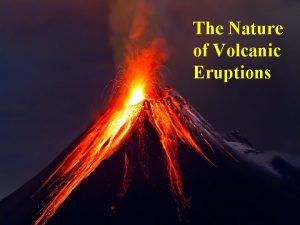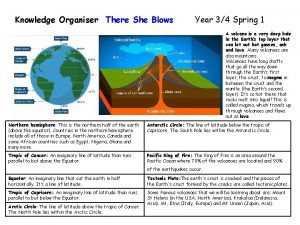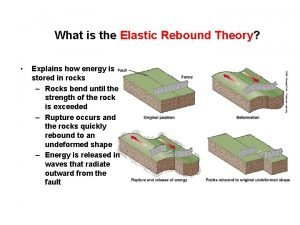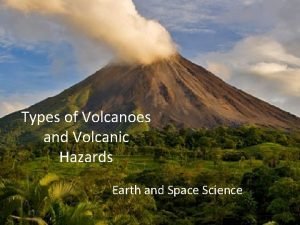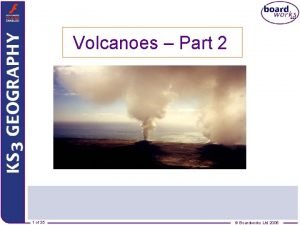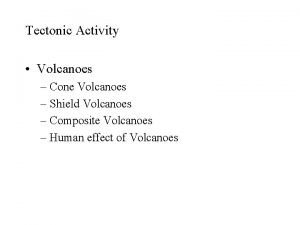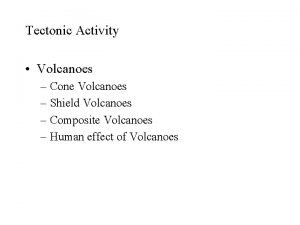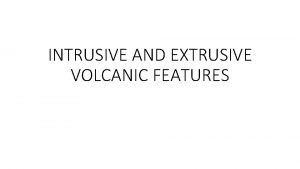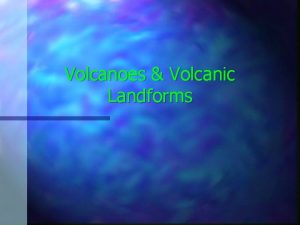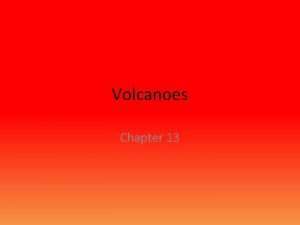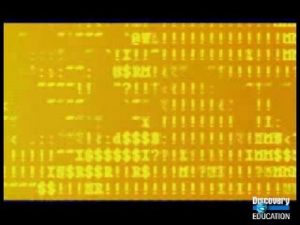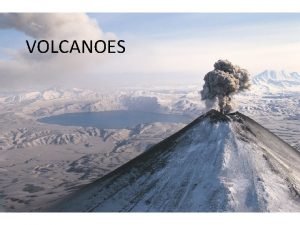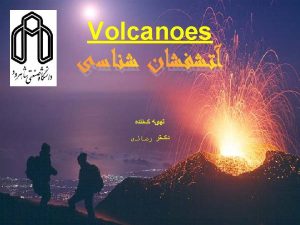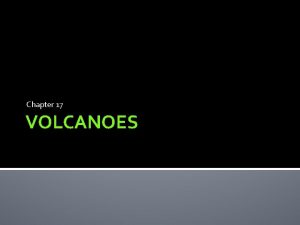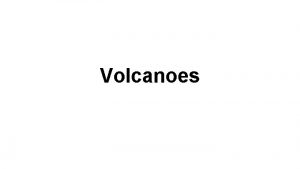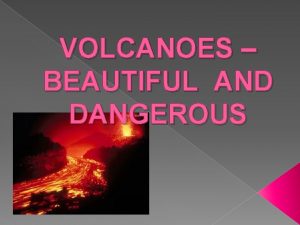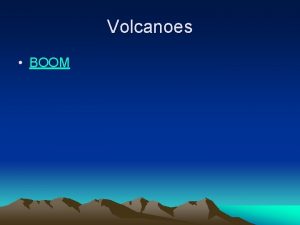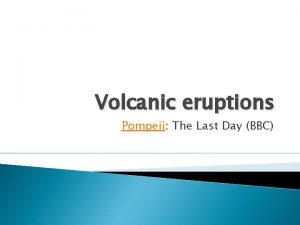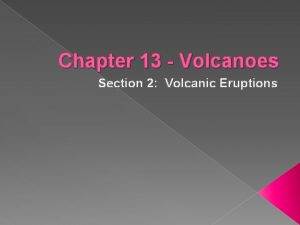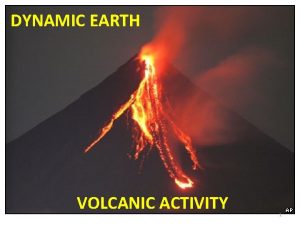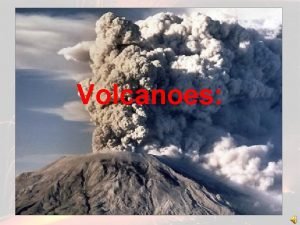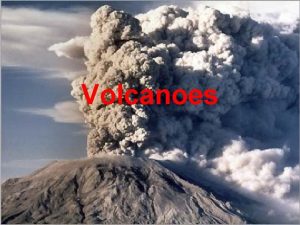Volcanic Activity Volcanoes In the last section we






















- Slides: 22

Volcanic Activity

Volcanoes • In the last section we learned that the outer layer of the earth is called the Crust. • We also learned that the crust is broken into many different pieces called Plates. • The plates are constantly moving because of Continental Drift. • This movement causes the plates to push together, pull apart, or slide past one another.

How do Volcanoes Occur? • Volcanoes occur when two of the earth’s plates pull apart. • Remember, beneath the crust the mantle is made from semi-molten (melted) rocks called magma. • So when a gap occurs in the crust (which happens when two plates pull apart) the magma spills out through the gap.

Lava • When the magma reaches the surface of the earth it is called lava. This is the reddish liquid you see coming out of a volcano.

The effects of Volcanoes • When the lava comes out of a volcano it cools and forms into solid rock. This can result in the formation of, 1. Mid Ocean Ridges 2. Volcanic Islands 3. Volcanic Mountains

Mid-Ocean Ridge • Sometimes volcanoes occur under the sea. • If two plates pull apart under the sea the lava rises up to the ocean floor. • It cools quickly into solid rock as it touches the cold sea water. • After many eruptions these layers of new rock build up to form mountains under the water. • A long chain of volcanic mountains under the sea is called a Mid-Ocean Ridge.

The Mid-Atlantic Ridge • Under the Atlantic Ocean the American plate is pulling apart from the Eurasian and African Plate. • This is causing underwater volcanic eruptions which has created a long chain of underwater mountains. • These mountains make up the Mid-Atlantic Ridge. • Some of the mountains in the chain are so high they stick out of the water and form volcanic islands.

The Mid-Atlantic Ridge

The Mid-Atlantic Ridge

Volcanic Islands

Volcanic Islands • When underwater volcanoes continually erupt eventually they may grow big enough to stick out of the water. • They form volcanic islands. Iceland is an example of a volcanic island.

Iceland: A Volcanic Island • Iceland is a volcanic island which has been formed as a result of underwater volcanic eruptions.

Iceland: A Volcanic Island

Volcanic Mountains • When two plates pull apart a gap is created. This gap provides a hole which the magma can escape from the mantle. It is called a Vent. • When the magma cools, along with other materials from the volcano such as mud and ash, they usually form a cone shaped mountain

Volcanoes



Stages in volcanoes • Volcanoes can be in one of 3 stages, 1. Active 2. Dormant 3. Extinct

Stages in volcanoes Active Volcanoes - The volcano is still erupting quite regularly. E. g. Mount Etna, Italy. Dormant Volcanoes - The volcano has not erupted for a long time but may erupt in the future. Extinct Volcanoes – The volcano has not erupted in historic times and will not erupt again.

The Pacific Ring of Fire • Many of the world’s major earthquakes and many of the world’s active volcanoes occur in a zone that encircles the Pacific Ocean. • This is because many of the world’s major plates meet here. Therefore, at this place the plates are pulling apart, pushing together and sliding past one another. • This causes earthquakes and volcanoes to occur.

The Pacific Ring of Fire

The Pacific Ring of Fire
 What is folding faulting and volcanic activity
What is folding faulting and volcanic activity Lava erupts through an opening in earth’s crust called a
Lava erupts through an opening in earth’s crust called a Chapter 18 volcanic activity
Chapter 18 volcanic activity Describe volcano
Describe volcano How are volcanoes classified
How are volcanoes classified Volcanoes for dummies
Volcanoes for dummies Where do most volcanoes occur
Where do most volcanoes occur How are volcanoes made
How are volcanoes made What do you already know about volcanoes
What do you already know about volcanoes Three main ways volcanoes are created
Three main ways volcanoes are created Volcanoes nature's incredible fireworks
Volcanoes nature's incredible fireworks Lithosphere definition
Lithosphere definition Chapter 8 earthquakes and volcanoes
Chapter 8 earthquakes and volcanoes How are volcanoes formed
How are volcanoes formed Most volcanoes occur __________. *
Most volcanoes occur __________. * Active volcanoes map
Active volcanoes map How do volcanoes change landforms?
How do volcanoes change landforms? Shield volcano
Shield volcano Volcanoes knowledge organiser
Volcanoes knowledge organiser Volcano cutaway
Volcano cutaway Types of volcanoes
Types of volcanoes Ring of fire volcanoes
Ring of fire volcanoes Magma chamber
Magma chamber
